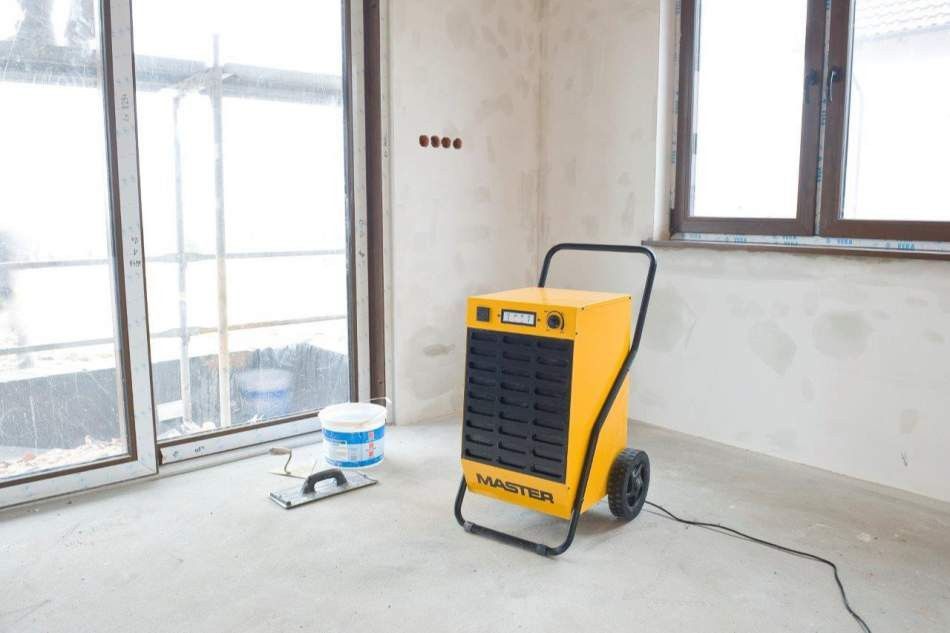Dehumidification On Construction Sites When Should You Have It and Why.


Seasons When Dehumidifiers Are Essential in Construction & Why
Dehumidifiers are particularly necessary during spring, summer, and early fall, when humidity levels are high. However, they may also be required in winter for indoor construction projects.
Why Are Dehumidifiers Important in These Seasons?
- Spring & Summer (High Heat & Humidity)
- Warm air holds more moisture, leading to excessive humidity in construction sites.
- Moisture slows the drying time of concrete, drywall mud, paint, and adhesives.
- Excess humidity can lead to mold growth on unfinished surfaces.
2. Early Fall (Lingering Moisture & Temperature Fluctuations)
- Cooler nights and warmer days can cause condensation on materials.
- High moisture levels in the air can delay finishing work like flooring and painting.
3. Winter (Indoor & Heated Construction)
- Heating systems can create condensation inside enclosed construction sites.
- Moisture trapped in materials (like concrete or wood) can freeze and expand, leading to cracks and warping.
What Happens If You Don’t Use Dehumidifiers?
- Material Damage
- Wood framing and flooring can warp or swell.
- Drywall and insulation can absorb moisture, leading to structural weakness.
- Metal components can corrode or rust.
2. Mold & Mildew Growth
- Excess moisture creates an ideal environment for mold, leading to health hazards.
- Mold can ruin materials, requiring expensive replacements.
3. Delays in Construction Timeline
- Extended drying times for concrete, paint, adhesives, and coatings.
- Flooring and drywall installation may be delayed due to moisture-related issues.
4. Compromised Structural Integrity
- Wet insulation loses its effectiveness, leading to energy inefficiency.
- Cracks in concrete due to trapped moisture can weaken the foundation.
When dehumidification is used to dry out buildings and materials, the dehumidifier runs continuously. The relative humidity is gradually lowered, allowing further evaporation from the damp materials in the room. The amount of evaporation depends on the temperature of the room, the materials and the humidity of the air.
One of the advantages of condense drying is that the drying process is stable and gentle. If time is not a crucial factor, the optimum dehumidification process is achieved by maintaining 68F degrees and approximately 40% RH in the room. This way, you maintain a perfect balance between the dry air in the building and humid building materials, avoiding surface drying and cavitation as well as damage to pre-dried materials such as parquet floors.
Add heat, if necessary, but keep in mind that forcing the drying process might be harmful. It creates a risk of surface drying and cavitation that only dries surfaces, leaving a lot of humidity inside the wall behind the dry surface. This prolongs the drying period as the humidity will not easily penetrate the dry surface. Surface drying also involves the risk of cracks appearing in the surfaces of walls, ceilings and floors.
It is important that the room/building is as sealed as possible. Also, make sure that the building is well protected against rain and snow. You need to ventilate while painting inside the building but remember to seal the room or building properly when it is empty. Moreover, remember to avoid pre-dried materials absorbing water because of open windows.
If the air change inside the room is not controlled, fluctuating ambient temperature and humidity conditions make it hard to control the drying process. In the winter, the cold outside air normally contains a minimum of water and the humidity is not likely to increase much even if the air change is considerable. Energy consumption, however, will increase dramatically as you need to heat up the cold incoming air. In the summer, the water content could be quite high, and you will have to remove even more water from the building or room if it is not sealed off adequately.
In most cases, the humidity is concentrated in cellars and in areas where water is being used in the construction work such as painting or concrete mixing. Set up your dehumidifiers where they do most good.
Overall using dehumidifiers helps maintain optimal humidity levels, ensuring efficient construction timelines and long-term material durability. In most big builds it is a must and will be stated on the drawings and on the contract. So, if you are a new GC make sure you read all notes on the building drawings. We here at On Time HVAC Rentals have all types of dehumidification and can walk you through the process of sizing your building for dehumidification. Give us a call at 215-520-6113.
215-395-RENT (7368)
2512 S 18th St
Philadelphia, PA 19145
Sales@ontimehvacrentals.com
Ontimehvacrentals.com

